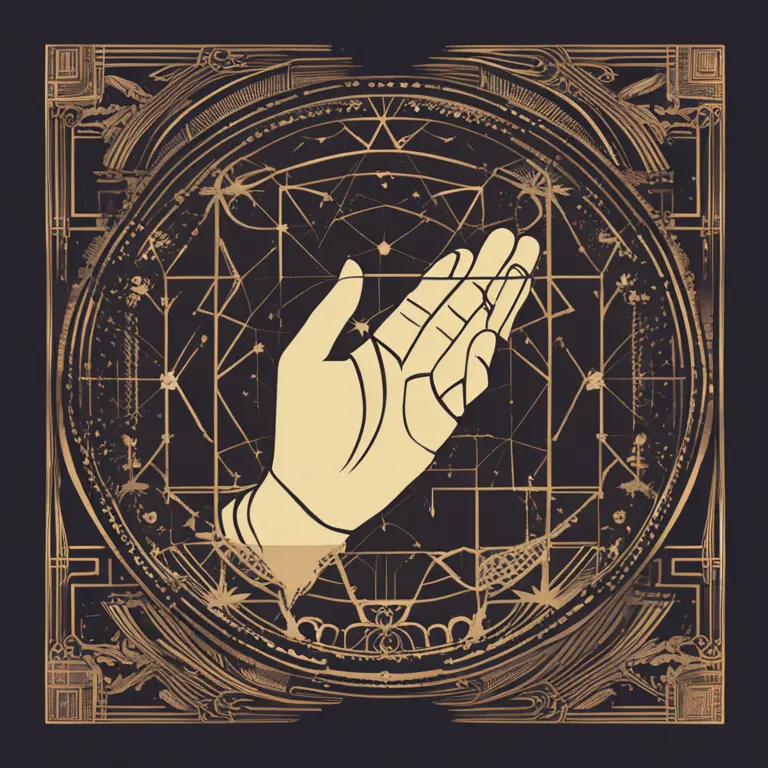
The Myth of Palmistry: A Critical Perspective
Decoding the claims of palmistry: an evidence-based examination revealing why many consider it baseless.
article by Nora Pennington
The Skeptic's View on Palm Reading
Despite its ancient history and widespread popularity, palmistry, the practice of interpreting the lines on a person's palms to predict their future and discern their character, remains a controversial subject. Critics argue that the practice lacks empirical support and relies too heavily on the subjective interpretations of the palm reader. In the modern age, where science and evidence-based practices are paramount, palmistry is often relegated to the realm of entertainment rather than a credible discipline. It's essential for us to examine these critical perspectives, especially as technological advancements continue to illuminate our understanding of the natural world.

The Placebo Effect and Confirmation Bias
Two psychological phenomena, the placebo effect and confirmation bias, often bolster the perceived accuracy of palmistry. Individuals may experience positive changes simply because they believe in the efficacy of the practice, a classic example of the placebo effect. Additionally, confirmation bias leads clients to remember the accurate predictions and forget the inaccurate ones, creating an illusion of palmistry's reliability. These cognitive biases frequently contribute to the perpetuation of palmistry without necessitating it to have a substantial factual foundation.

The Forer Effect and Generalizations
The Forer effect, or the tendency for people to rate vague and general personality descriptions as highly accurate for themselves, is another cornerstone of palmistry's apparent success. Palm readers often use statements that could apply to a wide range of individuals, which is why many people feel that their readings are exceptionally personal and revealing. However, this technique highlights the lack of specificity and scientific rigor in the practice, which does not change despite our progress into the year 2024 and beyond.

Lack of Scientific Validation
In the light of scientific inquiry, palmistry has not withstood rigorous testing. No credible scientific studies have demonstrated the reliability of palm reading predictions or interpretations. Unlike disciplines that have evolved and been enhanced by scientific discoveries, palmistry has remained largely unchanged, often eschewing the need for evidence in favor of tradition. In an era where science is expected to drive knowledge, many view palmistry as a relic that fails to provide verifiable insights into human behavior or destiny.

Cultural and Ethical Considerations
Cultural fascination with the mystical has certainly kept palmistry afloat, but it has also invited ethical concerns regarding exploitation and deception. As we become more globally connected and culturally sensitive, critics of palmistry highlight the importance of not misleading individuals or capitalizing on their desire for self-understanding and reassurance about the future. Ethical considerations weigh heavily against practices that cannot substantiate their claims, especially when they trade on the fears and hopes of their clientele.
Embracing Rational Skepticism
Rational skepticism encourages individuals to question beliefs that lack evidence, and palmistry has not escaped this scrutiny. As society continues to prioritize critical thinking and empirical evidence, practices like palmistry may find it increasingly difficult to maintain credibility. The value of rational skepticism lies in its power to protect individuals from unfounded beliefs and to promote a more truthful understanding of the universe and our place within it.
Published: 1/11/2024
Modified: 1/12/2024
More predictions
Come back here soon to learn more about yourself and your future


The Possibility of Palmistry in Cancer Detection
Examining the claims that palmistry holds any potential in identifying the risk of cancer: a deep dive into the world of mysticism and medicine.


The Efficacy of Palmistry: Real Insight or Fancy?
Delve into the validity of palmistry as a form of divination. Is there a truth behind the lines on our palms, or is it just a charming fancy?


Palmistry Basics: How to Read Your Hand's Secrets
Learn the basics of palmistry with this guide on how to read the lines and shapes of your hands to reveal insights about your personality and future.